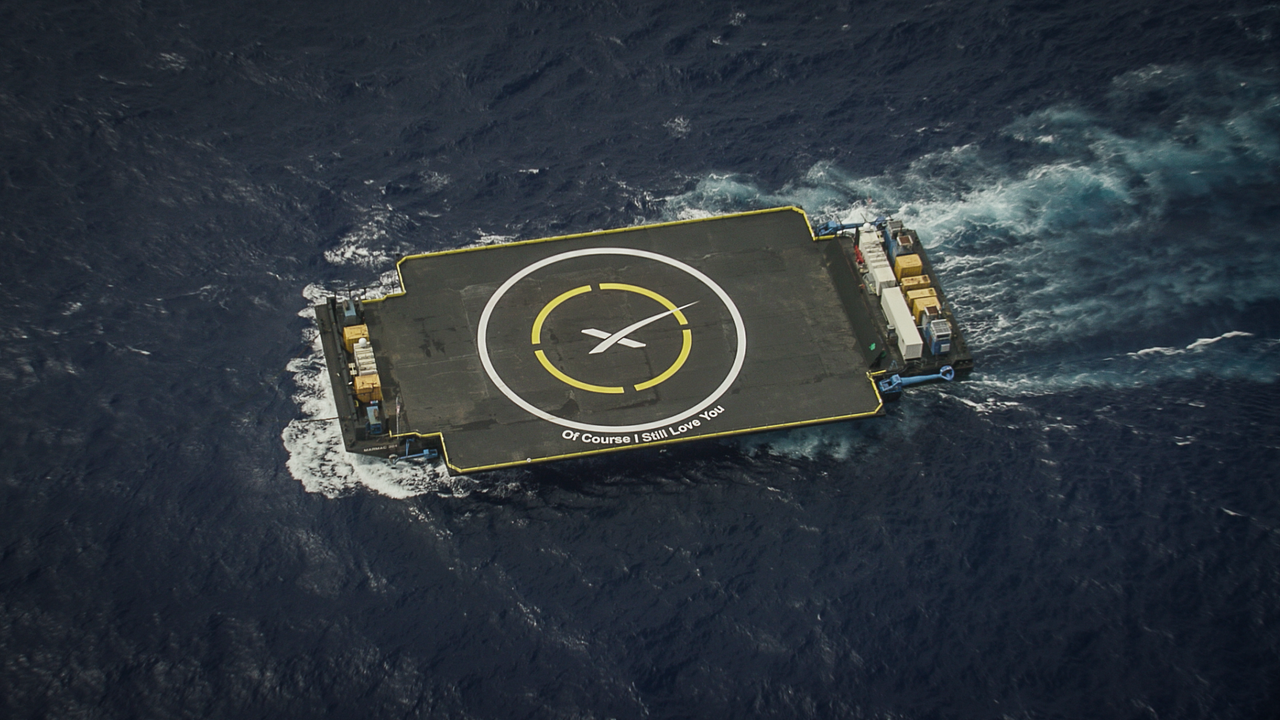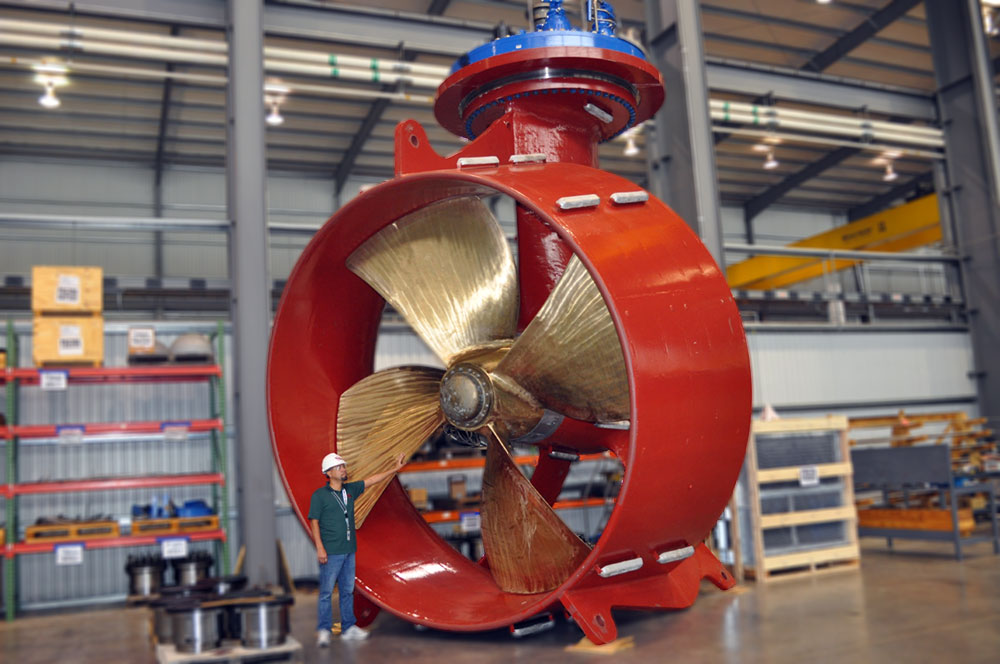
Are you interested to learn more about the robot boats (officially ‘Autonomous Spaceport Drone Ships’ or ASDS) that are part of the SpaceX fleet, whose primary mission is to facilitate the recovery of rocket first-stages at sea? Of course you are! So am I! The scope and breadth of what it means for a company to pursue a single minded goal, and to invent from whole-cloth anything they may require to get there is evident in so many aspects of the SpaceX operation. One small corner of that process – which could easily masquerade as an entire industry on its own – are the autonomous drone ships. Delightfully named after craft in the Iain M. Banks Culture series of novels, these ships contain their share of tech which should make other industries blush at the audacity of no-holds-barred, forward thinking innovation.
This will be the first of a multi-part series that dives into the known technology behind the drone ships, and today we will start with the engines.
Each of the football-field-sized ships (“Just Read the Instructions” stationed at the Port of LA, “Of Course I Still Love You” and the under construction “A Shortfall of Gravitas” based out of Port Canaveral) are driven by four diesel powered azimuth thrusters made by Thrustmaster. These marine propellers are designed to be rotated to any angle, allowing for high precision steering and the elimination of the rudder.
While it isn’t clear yet which model is being used on the ASDS, a likely candidate is the Bottom Mounted L-Drive Azimuthing Thruster, which specializes in absolute positioning capability for offshore supply vessels.

Their largest model of this line is the TH10000ML with an 8000 kW motor. Operating at a peak of 720 RPM, this drive is capable of generating 1337 kN of thrust and weighs in at a remarkable 194,006lbs. I like to imagine that there are 4 of these beasts under each recovery platform, and there are suggestions that these main engines are further assisted by additional smaller drive systems, all computer synchronized and coordinated with a proprietary GPS system.
The design specification of the SpaceX vessels, which are based on Marmac barge hulls, is that they must be capable of precision positioning within 3 meters even under storm conditions at sea. Imagine, keeping this floating platform stable enough to vertically land a rocket, then keep it steady enough to not simply tip over before it is secured through a combination of robotic and human assistants (the subject of a future article).
Notes:
propclubjax.com – Captain’s Corner: SPACEX – The World’s First Rocket Recovery Vessel
Fox Trot Alpha – SpaceX’s Landing Drone Ship Is Just As Complicated As The Rocket
True South Marine – The SpaceX Autonomous Spaceport Drone Ship
